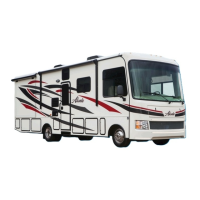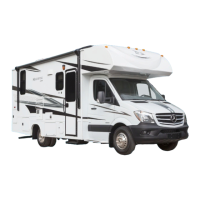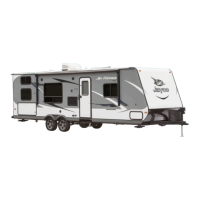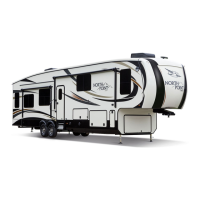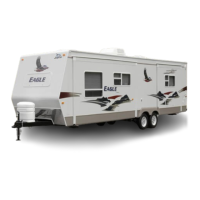SECTION 4-TOWING & SET-UP JAYCO TOWABLE
TIRES
Read and understand the following before taking your first trip in your RV!
Proper care and maintenance of your tires is essential to ensure your safety, as well as the
safety of others, as you travel.
Routine maintenance on your recreation vehicle is important, but it cannot be overstated
just how critical proper tire maintenance is to the safety, operation and durability of your
new vehicle.
You must follow the manufacturer’s inflation guidelines for maximum load capacity;
under-inflation is just as dangerous as over-inflation.
To insure your tires are operating safely, regular inspection of your tires and
checking tire pressures is absolutely mandatory.
When you are using your vehicle, check inflation pressure weekly to insure maximum tire
life and travel wear. Pressure should be checked when the tires are cold. During travel,
tires heat up and pressure increases. Do not bleed air from hot tires or your tires may
then be under-inflated.
NOTE: Cold tire inflation pressure is defined as a tire that has not been used for three
or more hours, or has been driven less than one mile. Tire inflation pressure of a hot tire
may show an increase of as much as 6 psi over a cold tire.
Tire pressure is the most important factor in the life and performance of your tires. Proper
inflation should be monitored closely. Failure to do so could result in the overheating of a
tire, which could result in a blowout. Inflation pressure should be as recommended by the
tire manufacturer or as the federal label for the recreation vehicle indicates.
Examine your tires frequently for unusual wear. Alignment, balance and bearing wear will
affect tire wear. Make sure to look for cracking, bulging, uneven tread wear, etc.
WARNING
It is recommended that the tire pressure be checked at the beginning of each trip to
obtain the maximum life of the tire. Follow the instructions listed on the Federal
Certification label, affixed to the roadside front corner of your trailer, to determine
the correct tire pressure. Under-inflation may cause tire failures and swaying; this
may result in loss of control, injury, death or property damage.
DANGER
Failure to follow proper inflation guidelines may result in tire failure, which,
under certain circumstances can cause loss of vehicle control or accidents that
may result in property damage, bodily injury and/or death.
Tire wear should be checked frequently. Once a wear pattern becomes firmly
established in a tire it is difficult to stop, even if the underlying cause is
4-13
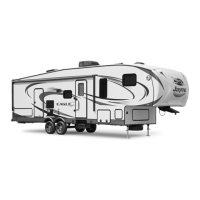
